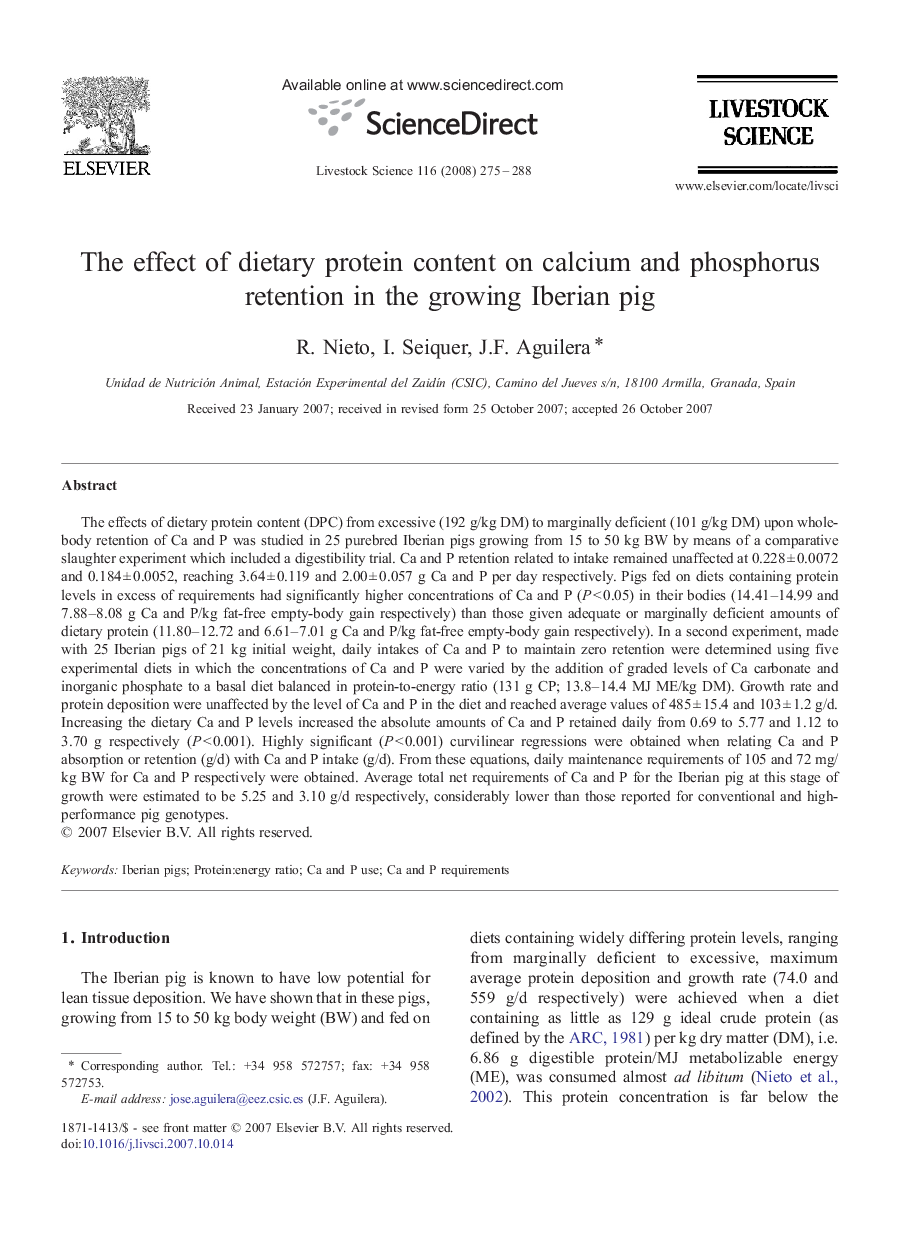| Article ID | Journal | Published Year | Pages | File Type |
|---|---|---|---|---|
| 2448431 | Livestock Science | 2008 | 14 Pages |
The effects of dietary protein content (DPC) from excessive (192 g/kg DM) to marginally deficient (101 g/kg DM) upon whole-body retention of Ca and P was studied in 25 purebred Iberian pigs growing from 15 to 50 kg BW by means of a comparative slaughter experiment which included a digestibility trial. Ca and P retention related to intake remained unaffected at 0.228 ± 0.0072 and 0.184 ± 0.0052, reaching 3.64 ± 0.119 and 2.00 ± 0.057 g Ca and P per day respectively. Pigs fed on diets containing protein levels in excess of requirements had significantly higher concentrations of Ca and P (P < 0.05) in their bodies (14.41–14.99 and 7.88–8.08 g Ca and P/kg fat-free empty-body gain respectively) than those given adequate or marginally deficient amounts of dietary protein (11.80–12.72 and 6.61–7.01 g Ca and P/kg fat-free empty-body gain respectively). In a second experiment, made with 25 Iberian pigs of 21 kg initial weight, daily intakes of Ca and P to maintain zero retention were determined using five experimental diets in which the concentrations of Ca and P were varied by the addition of graded levels of Ca carbonate and inorganic phosphate to a basal diet balanced in protein-to-energy ratio (131 g CP; 13.8–14.4 MJ ME/kg DM). Growth rate and protein deposition were unaffected by the level of Ca and P in the diet and reached average values of 485 ± 15.4 and 103 ± 1.2 g/d. Increasing the dietary Ca and P levels increased the absolute amounts of Ca and P retained daily from 0.69 to 5.77 and 1.12 to 3.70 g respectively (P < 0.001). Highly significant (P < 0.001) curvilinear regressions were obtained when relating Ca and P absorption or retention (g/d) with Ca and P intake (g/d). From these equations, daily maintenance requirements of 105 and 72 mg/kg BW for Ca and P respectively were obtained. Average total net requirements of Ca and P for the Iberian pig at this stage of growth were estimated to be 5.25 and 3.10 g/d respectively, considerably lower than those reported for conventional and high-performance pig genotypes.
